Uncategorized
now browsing by category
House and Home

During the hour and a half drive back to the house, I tried not to think about how good it felt to be among friends in GSO, or the tension seeping back into my shoulders at the thought of returning. Sitting at Ouiser’s awesome kitchen island eating my first hot, home cooked meal in longer than I dared to count, I laughed and I felt joy and comfort chatting with Mama Ouiser, her sisters and my friend. It was a glimpse into the life I expected to have upon my return to N.C. A life where I could invite friends to my home, cook for them, and where I could share my wonder at the new course my life is on. Later, I felt similarly as I sat at Starbucks chatting with Dr. Phoenix and Dr. Leaving Academia. There was a cloud in that conversation, however, we couldn’t seem to stop careening back to my housing problems.
Read the rest of this page »
Eulogy for the Unknown
We never met. In fact, I’m fairly certain we didn’t even exchange emails, or tweets. Anissa Mayhew was, however, one of the first people I followed on Twitter.
Though the medical bills from my own stroke prevented me from ever getting a t-shirt, I almost obsessively followed the Free Anissa campaign during her second, I believe, stroke.
Anissa’s eventual recovery, her continued writing, all inspired me during my own recovery and struggle to finish my dissertation. The strength of her friends and family provided a window into what my friends and family went through on the other side of my stroke. In fact, I am fairly certain it was Ouiser who first encouraged me to read and follow Anissa.
In the last few years, as the DH’s medical emergencies, moving to Minnesota, the DH’s crisis, our divorce, and my move back to North Carolina kept me a little preoccupied, I would see the announcements of the latest from Slightly Bent Productions, but it would often get lost in my feed before I had a moment to click through. Still, when I saw @Cecliyk’s tweet, “Damn it, @AnissaMayhew! I’m going to fucking miss you. Hope you are enjoying high heels and bacon right now.” My heart dropped. I snooped around and learned that Anissa died today.
We never met, but the tears came quickly and easily, as if for an old friend I hadn’t seen for a while. She’ll never know it, but Anissa Mayhew made me feel less alone as I recovered from my stroke. Knowing there was someone else out there recovering from a similar event, struggling to continue writing and maintain her voice, made me feel as if I could get through it all myself. Her absence is a great loss for her friends, family, and more of the world than they may realize. I wish them all peace. Anissa will be missed.
Working Lives
Recently, I was asked to write a book review for a professional journal. Given that I knew I wanted to read the book, was confident I could write a good review, and have nothing else in the publication pipeline right now, I ignored the truly crazed status of my to-do list and agreed.
Yest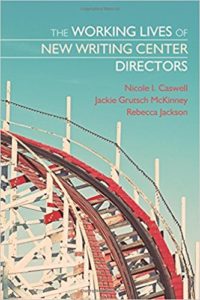 erday, I stopped reading a chapter here and there, and committed to finishing the book. No, you won’t get my review here. What you will get is my personal reaction to this book. How are those things different? Well, my review for the journal will put this book in conversation with all the other interesting recent books on writing center studies and comment on the professional need for the books, and all of that wonderfully boring outside of the profession kind of stuff. My personal reaction to the book — that is the stuff of this blog. Because in addition to all that wonderfully boring stuff I will write about, this book made me think about myself and my career.
erday, I stopped reading a chapter here and there, and committed to finishing the book. No, you won’t get my review here. What you will get is my personal reaction to this book. How are those things different? Well, my review for the journal will put this book in conversation with all the other interesting recent books on writing center studies and comment on the professional need for the books, and all of that wonderfully boring outside of the profession kind of stuff. My personal reaction to the book — that is the stuff of this blog. Because in addition to all that wonderfully boring stuff I will write about, this book made me think about myself and my career.
Hell, my whole life is making me do that right now! This book just gave me an interesting frame in which to do that. The book is a case study of nine writing center directors with different backgrounds working in different institutions in positions with different types of contracts. There was hardly a chapter in the book that didn’t resonate with me in some way. The whole thing got me thinking about my own career trajectory, which is a little weird for me.
Yes, this is yet another thing that creates a dissonance for me between the class I grew up in and the class I’m slowly moving into. I wasn’t really raised to think in terms of career, you see. Since I was 16 I moved from one job to another: bagger at the grocery store, checker at the grocery store, front desk worker at the hotel, video section manager at the grocery store, night shift desk worker at a hotel, shift supervisor at Starbucks. All of these jobs were just that, things I could leave easily for something different or seemingly better. Even when I started teaching the adjunct nature of what I did as a graduate student made teaching feel like a job, not really the career to which I aspired.
Things have changed though, and as I move through at least three of the different types of writing center positions described in this book, I have to acknowledge that I am on a career path. See, I started out my work in writing centers like many of the directors in this study. I’d been working on a Rhet/Comp Ph.D. and worked in the writing center, admittedly more than most, but it wasn’t where I saw myself building a career. Writing centers weren’t even going to be a part of my dissertation until I took my first position directing one.
In many ways, I saw that position as a job, something to do while I finished my dissertation, and the nature of the position helped me to see it that way. My first position as a writing center director was an academic staff position at a large, regional, RI institution. I started out as a 10 month employee and my official title said nothing about the writing center. I was a Coordinator in the Undergraduate Tutorial Center. Yes, my primary focus was to direct and expand the writing support services, but my title didn’t reflect that at all. I found this awkward, and more than a little embarrassing, at writing center conferences, where upon introduction I would make it a point to explain that I did the work of directing the writing center, without that title. I learned to do that work, on that job.
One of the things this book does, and which I will talk about very sagely and academically in my review, is to try to understand how the different types of position a writing center director can shape the position, and even determine whether or not a person will stay in that position over time. Eventually, I needed to leave that job, and it was easy to do while still thinking of it as a job. I’d advanced as far as I could in that position, and at the time I missed teaching and faculty life. Consequently, I took a chance. I left a fairly stable academic staff job for a two-year contract that came with teaching and faculty status. I had ample reason to believe this two-year contract would be a stepping stone to more permanent employment at the same institution, but that didn’t change the initial temporary status, or the employment insecurity that can bring. The gamble paid off though, sort of.
This fall I will begin a tenure-track faculty and writing center director position, at a new institution. According to general lore, this is the holy grail of writing center positions. I will have a tenure home in the English Department and a 2-2 course load because of my release time for directing the center. It is, however, back in North Carolina, which means that in the last two years I will have made two cross county moves. (Yes, you can bet you’ll be hearing more of this.) In this particular case the general lore is confirmed by the case studies in this book I am reading to review. The directors who stayed in their positions for the length of the study, and up to one year after, were the directors who taught, and were on the tenure track. I chose not to stay in my first two positions because they did not offer me one or the other of these elements. What I have to wonder though, is how much of my decisions were based on the way academia socializes us to think that success is a tenure-track job? Do people seek out and stay in tenure-track faculty / writing center director positions because those positions represent the best working conditions for writing center directors?
Certainly, the temporary nature of my two-year contract played into my decision to apply for other employment, and yes – probationary tenure-track employment received first consideration. Seeking out those positions was primarily motivated by my desire to stay in one place for a while. I know I didn’t really consider whether or not splitting my time between teaching and faculty responsibilities and directing the writing center was necessarily the best way to direct a center. It wasn’t until I started thinking about my working conditions that I realized how often in the past two years I missed my academic staff job.
I know, right?!? When I first started, I wasn’t sure I would be able to hack it because I was so used to fall break, spring break, etc. It took me at least two years to adapt from an academic schedule to the M-F 8 – 5 staff world. I miss that structure though. I miss being able to plan my time off / vacations when they make the most sense for me, not when the academic calendar says. As a staff person, when I decided to take time off during spring break, or fall break, I could actually take that time off. I didn’t have to spend it catching up on grading or planning for my courses. Yes, while I was in that position, I missed the teaching I get to do now. Thinking about the last couple of years though, what I wanted to accomplish and what I was realistically able to get done, I am not entirely convinced that balancing assistant professorship with writing center directing creates the best working conditions.
Like the authors, I don’t have the answers for what is the best. I am not even sure we can define one particular set of conditions perfect for directing a writing center. There are too many factors, to many variables, and ultimately it is a matter of personal preference. What I do know, is that as I move into this new position, my biggest challenge is going to remain balancing the competing demands for my time and attention.
Fresh Sheets

A life time ago, I took a quarter of Russian while at community college. I may not remember much beyond the first seven letters of the alphabet, and a few random words, but I did enjoy that quarter.
One of the best parts of learning a new alphabet was learning the names and sounds of new letters and accent marks. 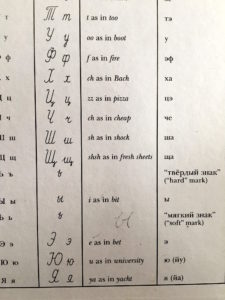 I may not have any idea of how or when to use it, but I still walk around saying Мягкий Знак, which is a “soft” mark, to myself just because it is fun sounding.
I may not have any idea of how or when to use it, but I still walk around saying Мягкий Знак, which is a “soft” mark, to myself just because it is fun sounding.
A different Russian letter has been on my mind lately, the Щ. According to my old text book, this letter sounds like a double “shsh,” as in fresh sheets. It was some Saturday in early November, as I put my freshly washed sheets back on my bed, that this Russian letter came back to my mind. You see, in that moment, I realized I’d been doing something slightly odd, for me anyway, since September.
For at least two months, I’d been pulling these particular sheets off my bed, washing them, and putting them back on the bed in the same day. Not earth shaking behavior, but different from my typical routine of pulling sheets off the bed, putting new ones on, and then eventually washing the old ones. I like a newly made bed, and I especially like variety. Though not everyone will see them, a new set of sheets on the bed helps me feel like I’ve redecorated just a bit; so I often change my sheets, mix up sets with patterns and coordinating solids, because it makes a room feel a little new to me. Keeping the same set of sheets on the bed for over two months, even through washings, not my usual behavior.
As you can imagine, these sheets were special. It’s not their fabric or thread count, these sheets are special because they came unexpectedly. As August ended and September began, and everything in my life changed in a week, Dr. Lawyer-Author (or Dr. LA as we’ll call her) was a lifeline for me. I’d call with legal questions, end up a blubbering mess, and she would put me back together and help me find the answers I needed, and in the midst of everything, she sent me a care package.  Ouiser’d sent me all the music I could need for this transition, and a lifetime membership to the Total Badass Club. My name may have changed, but it’s still valid. Dr. LA, sent me a care package of things I would definitely need, like a journal and wonderful yarn I was only allowed to use for myself, and this set of sheets. The sheets simply said, “New sheets for a fresh start.”
Ouiser’d sent me all the music I could need for this transition, and a lifetime membership to the Total Badass Club. My name may have changed, but it’s still valid. Dr. LA, sent me a care package of things I would definitely need, like a journal and wonderful yarn I was only allowed to use for myself, and this set of sheets. The sheets simply said, “New sheets for a fresh start.”
I chuckled a little to myself, “Only Dr. LA would put sheets in a care package.” But, I washed them put them on my bed, and a couple of months later finally understood. The rest of this house, even as I slowly deep clean, pack away, and rearrange things, remains something cobbled together by the DH and I. The Cuba travel poster that hangs in the kitchen, we picked together. The coffee and end tables in the living room, he picked out.  Certainly, I’ve started adding my own touches … the cork boards of postcards hanging next to the Cuba poster, the new shower curtain I adore, but for a long time those sheets were the first; the first things of my own on this new journey.
Certainly, I’ve started adding my own touches … the cork boards of postcards hanging next to the Cuba poster, the new shower curtain I adore, but for a long time those sheets were the first; the first things of my own on this new journey.
They also represent the most important element of this transition, my friends. Through out this black hole of a year, it has been my friends, specifically my girl friends, who have seen me through. Dr. LA, Ouiser, Dr. Phoenix, new friends yet to be named, and old friends who popped back into my life, they gave me the strength, the resources, and courage to do what had to be done, and picked me up afterward. There is no way to thank any of them enough for all they have done for me.
A family visit meant switching out the sheets to a whole new set, but I think today, as I prepare for a, hopefully, fresh start in 2017, I will put my favorite set of fresh sheets back on my bed. Maybe, given the current political climate, I should work a little harder on re-learning Russian as well.
This still matters
Periodically Ouiser sends me articles from Greensboro about things she know will interest me. One of the stories I’m nearly always happy to get an update about is update about Deborah Moy. Nearly always. I was not happy to hear that the man accused of her attack was release. Also, the updates written by Brian Clarey tend to get mixed reviews from me.
In 2009, shortly after the September 2008 attack, I wrote a piece for Shakesville, posted under the title “This Stuff Matters” about the media coverage of this case, and specifically Clarey’s treatment of it. You can find details of the case there. Yes, having a piece at Shakesville, feels as good as being a PhD now, instead of a PhD in Training as I called myself. Even if re-reading it today makes me want to edit it one more time.
Clarey’s updates receive mixed reviews from me, because on the one hand, as Ousier points out, he is the only one who still covers the story. At the same time the lens and tone of his coverage is always off. Like Clarey, I was drawn to this case, and am still haunted by it, because of a personal connection. The DH had worked with Moy, and remained friends/acquaintances with her. His profound dismay when he called to tell me about the incident, coupled with my own horror as I heard about it etched this story into me. Little did the DH and I know, when we heard of the mid-September attack on Moy, that I was also just three weeks away from our own life changing event.
As I’ve written about before, on October 4, 2008 I had a stroke. I spent the next three weeks in the hospital recovering. One of the effects of the stroke was that it took me a very long time to begin to accurately remember the days and weeks leading up to the event. I could remember my 35th birthday on September 2nd, mostly because I was sick with the flu/cold I unconsciously associate with the beginning of my stroke time. I could also remember the doctor’s visits when I complained about the pain in my neck, which I assumed was from coughing and working at the computer. Yep, I was wrong about that! The attack on Moy was one of the few, not health related, things I remember from that month, and I remembered it fairly quickly. There are really no facile comparisons to make between our recoveries, and I would insult her determination and fortitude trying to make one. Linked by one degree of separation and some traumatic associations, Deborah Moy and her story were simply never far from my mind.
At first, my outrage and anger at the way her story was represented (read the Shakesville article then dial up the outrage by about 1000) kept me seeking out stories and updates. Hoping beyond hope to find a story that acknowledged the horror of her attack and humanized her, I searched. These days, as happy as I am to find Clarey’s periodic updates, I’m still searching for an article that treats Deborah Moy as a human; one that doesn’t fall into sad gender traps, valorize the author’s story over her own, or verge on the cusp of inspiration porn.
This morning, when I received the article link from Ouiser, I started reading without looking at the by line. By the time I got to the following paragraphs, I scrolled back up to confirm that it was Clarey’s byline.
I didn’t really know Deb back then except as another face at the bar, but I identified with her as a member of my tribe: the floundering artists, service-industry lifers, lifestyle drinkers and other assorted stripes of the creative underclass. And it pissed me off that no one was doing anything about it. So of course, I did.
All I had to go on were several disconnected threads, snippets gleaned over nights at the bar and in after-hours apartments.
I had to stop. As I pointed out in detail in my piece for Shakesville, the problem with Clarey’s early reporting was precisely that he did not present Moy as “a part of [his] tribe.” The problem continues in this new piece. The piece verges on inspiration porn praising Moy’s spirit, perseverance, and determination, while valorizing her character and never really letting us get to know her.
You know what, if that is the story she wants told I’d be all for it, because it is inspirational to me. Clarey, however, never lets us forget that this story is really all about him, “… no one was doing anything about it. So of course, I did.” Later in the article, after discussing the police failure to solve the case, “I never thought I would solve this crime — and I have never come close — but even now, in preparing to write this story, I start picking at threads. Chasing ghosts.” Intentionally or not, in his updates Clarey re-writes the story to be one of his own heroic reporting. He follows the story no one else will; he maintains his connection. Moy becomes a part of his tribe, but only in her perseverance, which is also his own.
Look I get this, to a certain extent, is “Bart’s People” reporting, and that Clarey is following the tropes of the genre, which including inserting himself into the story. I’ve done a similar thing here explaining why I continue to follow this case. To me, however, this story has always been more. It’s a reflection of how we treat victims, and especially women, when telling their stories. I don’t want the tropes, the party girl, the girl who loves her dog and drinks her milk, the survivor who overcame. I want Deborah’s story told with respect for her as a human being. The one that is hard to tell because it is all those things and more. Clarey tries, but never quite gets there.
New Hair

I have never been much of a concert goer. Maybe it was because I didn’t see my first concert until I was 18. Maybe it is that I have to be in a very specific mood for crowds. These days it probably has something to do with how sensitive I am to loud things. I forget every time, but I always wish I had ear plugs at the movies.
The only band I have seen in concert more than once is Pearl Jam. They were my first concert, and it was amazing. They opened for Neil Young, which is great for when I want to sound more cool than I am. “Yeah, my first concert was Neil Young and Crazy Horse.” No one needs to know I barely knew who Neil Young was at that point. The second time I saw Pearl Jam at the Key Arena, and Sonic Youth opened up for them. Yeah, that doesn’t make me cool either. I sat through Sonic Youth. If I could go back though, I would pay a bit more attention. Actually, what I remember most from that Pearl Jam concert was that there was a small group of people off on the side of the stage. One girl had the most awesome hair. It was dark like mine, but there was an amazing band of red at the front. That has been the hair I’ve wanted all my life.
Once before I took the plunge and did it. Before you think this is no big deal, please keep in mind that when you have naturally dark hair, getting color into it isn’t easy. It requires several processes, and is definitely not something you do by yourself at home. Several processes typically mean several dollars, however, so this hair remained a dream for a long time.
Well, until last Wednesday when I did it again. Am I too old for this nonsense, probably, but take a good look. This is my hair. This simple cut, with this hint of color. I love it. It is me. It’s not the best picture because our lighting isn’t great, but it is the only one I will have for a while.
Morning Comfort

One 30 day challenge I set for myself this month was to eat oatmeal for breakfast every morning. Truthfully, it is not much of a challenge for me. Over the years, I have developed an impressive oatmeal repertoire. When I first started my job at NC State, I had to get up so early to drive to the park and ride then catch the bus to campus that by the time I got to campus I needed second breakfast. Since that heinous commute was driven by the fact that we couldn’t afford to move, second breakfast wasn’t really in the budget either. The result, I learned to make my own instant oatmeal.
Why not just buy instant oatmeal? Because it is disgusting. The flavors are too artificial, too sweet, and it is just always slimy.
Once we moved to Durham, I developed a summer and winter oatmeal habit. In the summer, I’d make overnight oatmeal in mason jars. In the winter, I’d make overnight oatmeal in the crockpot. I’ve learned all the ins and outs of everything from quick cooking to steel cut oats, and have favorite combinations for each. The only consistent thing is that they all require walnuts.
This winter my go to oatmeal is pretty simple: stove top Old Fashioned oats with brown sugar, cinnamon, craisins and walnuts. Of course, as you might have guessed from my planner and organization fetish, it’s not really that simple. Making my morning oatmeal is a detailed little ritual. I’d hoped to share pictures with you, but my phone and email had other ideas. All I have is the pretty final product. 
It’s hardly worth two posts, but maybe someday I will get the whole process here. For now, you can see I end up with a pretty, chewy bowl of yumminess in the morning.
Planners and Practices – Changing Perspective
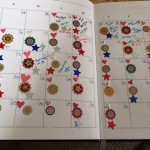
Though I have been using the Planner Pad for a while now and I like it, I generally feel bad because I do not follow the Planner Pad system. So, I love the lay out, and it keeps my information where it needs to be, but it doesn’t help me get things done like it should.
As with many other systems, the Planner Pad worked for me, until it didn’t. Some of the problem is my own lack of discipline. Some of it is that there is always one aspect of a planner that works great for me, but some other aspect that requires me to develop a personal work around. Some of it is my intense love of getting organized (searching for new planners), and my perpetual inability to stay organized. Yes, I am a bad Virgo. I love the big clean, and hate the daily maintenance.
You know where this is going, right? Of course you do.
About a month and a half ago, I ordered a new planner. Actually, it is a note book, The Spark Notebook. There are no dates printed in it, and it is built for six months at at time. New for this year, the company is doing a planner as well, but I wanted to try out the system on a shorter basis first. Before I start this little review, I should note that I paid for my notebook and am not receiving any type of compensation for this.
Part of the reason I opted to try the six month notebook as opposed to the planner is that the Spark Notebook focuses heavily on goals. In spite of all appearances to the contrary, I have never been much of a goal setter. I’ve been content to walk the paths life sets me on, because it has always seemed that when I try to make my plans too specific the universe comes along and sets me down somewhere else.
The notebook starts out yearly planning by inviting you to develop a theme for the year. Perfect for me since I started determining my word of the year. After the yearly planning pages come the monthly pages that include goal setting, a challenge, and a monthly view.
After the monthly pages comes the weekly pages. Opposite each weekly goal setting page, is a page with a writing prompt and blank space. Where you can either answer the prompt, or use the space as you need.
The next two pages are for the weekly view. (I LOVE this weekly view.)
The reason I love this weekly view is it gives me the structure I need, but also the freedom to do what I want within that space. In fact, this is the primary reason I am currently so happy with this notebook.
At the end there are also notes pages, which you can use for whatever you like.
After using this planner for a full month, I think you can tell that I like it more than just a little. I still need to work on my goal setting skills. I didn’t quite accomplish everything I’d hoped in December, mostly because I am patently terrible at working from home. I love the monthly challenge part though! I set myself three challenges this month, and then used the monthly view to track my progress.
- No coffee – round flower-style sicker
- No candy – star stickers
- Be nice to the DH – heart stickers
Okay, so I wasn’t perfect at all of them. We all have our cranky days, and I was pretty good about the candy until people started sending it for Christmas presents. Just go ahead and count those flower stickers though, yeah – you got that right.
31 days with no coffee!
Don’t worry, I didn’t go completely mad. I’ve been drinking tea, so I was getting caffeine from somewhere. My primary tea has been Twinnings Lady Grey, which has a pretty mild caffeine level. Why would I do such a thing? Partly, it was just to see if I could. Mostly though, it was about really enjoying coffee again when I got done. Yes, I am making myself a cup first thing tomorrow morning. Yes, I will be enjoying it like Ally McBeal. (Go watch that video. Sorry, for the weird sped up dialog. I couldn’t find a better version.)
The funny thing is that the no coffee this month has been the easiest challenge, though I expected it to be the hardest – even with the tea to help me. The only time I really wanted a coffee was when I would go shopping. I usually take a cup with me, or pick on up at our Target Starbucks, to sip with I wander. The other surprise is how good I felt after only a week or two. Sure, some of that was from the no candy thing too, but to be honest I did a lot of filling in with muffins, cookies, and donuts. I was still getting way too much sugar. (Can you guess one of my January challenges?). My few days of eating candy again in the last couple of weeks have left me feeling pretty lousy. Apparently, not lousy enough to stop again after one day, but still not good. I am planning to continue with that for the time being.
Without coffee though, I have felt good enough to consider a full time switch for a while, or just bringing coffee back as a weekend only affair. I am still not sure. It will depend on how I feel after that first cup.
There are still five more months of this trial to go. Who knows if I will still love it by then? If I will get better at goal setting? What kind of challenges will I set for myself? I don’t have any of those answers, but I am looking forward to finding them out.
Momentary Reprieves
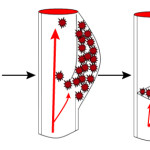
When I accepted this job, the DH and I had some idea of what we were getting into. After all, we both spent some time growing up here and met at a college in southern Minnesota. Neither of us were surprised things started getting cold at the end of September; certainly, we weren’t happy about it, but we remembered enough to expect it. What we had forgotten, however, was one of the best things about fall in the North. The unexpectedly warm up. After a couple of weeks with highs barely in the 60s, grey skies, and occasional freeze warnings.
We’ve been blessed with a gorgeous, sunny, 80 degree weekend. Granted my ability to appreciate this weekend has been somewhat limited. My head really hates these kinds of sudden changes in the weather, and lets me know that with terrible headaches. Whenever the Advil kicks in, though, I have made it a point to get outside to do something. I mowed the lawn one last time, and played some catch with Bradley. Anything I could do to enjoy this reprieve from the cold, dark winter I know is coming. Yes. I said it. Winter is coming.
It wasn’t until last night, when the tightness in my neck and shoulder returned after dinner, that a different reprieve ended. I remembered: how I’d been sick at the beginning of the semester, how I’d been sneezing frequently and with a lot of force for the last week; how I have been pretty stressed about my new job; how all of those things are slightly different, but very much the same way I’d been feeling seven years ago. As those things dawned on me, I realized the date, and that for the first time I’d completely forgotten Stroke Day.
Seven years ago, on October 4th, I suffered an stroke, specifically an arterial dissection in an artery on the right side of my neck.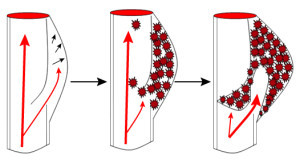 I was just 35, so it surprised everyone from my family to the doctors, who took 13 hours to diagnose me. To this day no one really knows what caused it. Since then, I have always found a way to “celebrate” stroke day. Nothing big, so maybe commemorate is a better word than celebrate. This is the first year that Stroke Day passed completely unnoticed by me, until I started thinking about my headache that is.
I was just 35, so it surprised everyone from my family to the doctors, who took 13 hours to diagnose me. To this day no one really knows what caused it. Since then, I have always found a way to “celebrate” stroke day. Nothing big, so maybe commemorate is a better word than celebrate. This is the first year that Stroke Day passed completely unnoticed by me, until I started thinking about my headache that is.
That I could forget Stroke Day this year is remarkable, since a good friend of mine, who suffered a brain aneurysm has spent the month blogging about her story and preparing for a fundraising 5k. I have, for reasons you can probably imagine, avoided reading Niki’s story. Seeing her posts promoted on Facebook and her race photos, however, probably should have put Stroke Day on my radar. Once I remembered however, I had to work pretty hard not to worry excessively about my headache.
Having a stroke, learning to walk again, writing and teaching again for the first time, those are things that you don’t really forget. More importantly, they are things your friends and family do not easily forget. One thing I have always maintained is that my friends and family were much more deeply scarred by my stroke than I was. I couldn’t see myself getting a spinal tap in the ER; in and out of consciousness in intensive care. The doctors weren’t tell me all the worst case scenarios possible: I would never wake up, never walk, never be the same. When I finally “woke up,” and began my recovery, I felt normal. Yes, I had obstacles and things to do, but I dealt with them the same way I do everything, I just did it. (One foot in front of the other, remember.) I couldn’t see the differences in my personality, in the way I moved. One result of this has been that I am typically able to worry much less about my health. Maybe a better way to describe it is that I am able to treat my health much more normally than my friends and family. For me a cough is just a cough, and a pain is just a pain.
For a long time, every sneeze, cough, or mention of pain meant the DH would ask, “Are you okay?” in a particular tone, then hover over me until I was back to normal. Intellectually, I understood his concern; emotionally, it was stifling and felt like I could never fully recover until everyone would start treating me normally. For the longest time, I just refused to talk about my health. If I had a headache, I took some Advil and Tylenol and did my best not to mention it. My reprieve, my ability to forget stroke day, and then my realization in conjunction with my headache, actually helped me to understand the DH’s worry a little better. I knew my headache was just a headache, but once memories of the stroke began it was almost impossible to get them to stop.
My friend Niki, who made it through her brain aneurysm, talks a lot about celebrating her “Life Day,” the day she had her successful operation. I think she like, a lot of people, sees my insistence on remembering Stroke Day as somewhat morbid and negative. I don’t see it that way at all. Remembering Stroke Day, or this year forgetting it, for me is about recognizing my own vulnerability, recognizing my ability to get up and keep going, and recognizing the strength of everyone who went through that experience with me. 
After Umpqua Community College
October 1, 2015
The first thing I read that day was a thread from a professional listserv. A professor asking advice from colleagues about how to deal, and help her class deal, with the shooting of a student.
The first thing I wrote that day was a conference proposal about the ethics of writing center sessions, and their connection to diversity and inclusivity
Because I had several writing tasks that day, I kept myself away from social media and news sites. It wasn’t until after lunch that I heard about the massacre at Umpqua Community College.
The Pacific Northwest is a large place. Physically, I am not from anywhere near Umpqua Community College. I did, however, begin my educational career at a community college in the Pacific Northwest; perhaps, that is why this particular incident of school violence feels different to me.
Image from here, couldn’t find appropriate credit.
Though I went to community college in Washington and perhaps things are different in Oregon, the community college mission is so closely tied to region and place that I feel comfortable generalizing a little bit from my own experience. With the caveat that I am only speaking from my experience as a student: Community colleges in the Pacific Northwest are different than I have seen elsewhere, because, though they provide technical support and programs, they function more like junior colleges preparing students for transfer to four year schools.
I do not joke, or exaggerate, when I say that the best part of my education happen at that community college. I learned how to think; In a 10 week quarter learning community, I did nearly as much writing as I would do for my dissertation. Most importantly, my time in the community college classroom introduced to the importance of diversity of all kinds in the classroom. My community college classroom included traditional students fresh out of high school, recent returners, like me, with a year or two of “real world” experience, grown men and women forced into retraining by the declining industries in our area. Throughout my studies there I learned to work with people of different faiths, races, sexuality, and abilities. Was I always the best friend and all I could be, no; I was naive, and I was learning.
Of course, I wasn’t able to articulate the importance of my experience in that Northwest community college until I left it. Until I sat in an undergraduate classroom where everyone there looked the same, and though I couldn’t articulate it, I knew we were missing important perspectives. Until I moved south where I could really learn about race, racism, and how my silence and support was sometimes better than my best intentions. Until I taught at a community college where technical programs were valued over liberal and general education courses.
Certainly, my image of my community college is tinted in the rosy glow of nostalgia, but even so I would never have called it an idyll or safe space. I was pushed, challenged, and yes … sometimes it was uncomfortable, but I was never afraid. Having been away, having my own new perspective, it was that little difference; my confidence in my physical safety, that allowed me to accept the push, the challenge, and the discomfort of my community college education. That is the little difference, the confidence in their physical safety, that the students of Umpqua Community College, and many other community colleges lost yesterday. As I grieve for the lives lost, the lives irrevocably altered, I also grieve for that lost confidence, the lost element that enabled so much of my own learning.
One of the posters to that thread on the professional listserv reminded everyone of “the question from Mary Rose O’Reilly that Claude Mark Hurlbert put before us at IUP: “Is it possible to teach English so that people stop killing each other?””
Perhaps, I am not the English teacher I thought I would be when I was at the community college. Heck, I am not even the English teacher I thought I would be in grad school. As of October 1, 2105 though, I am an English teacher ready to wrestle with this question; to do everything in my power to “teach English so that people stop killing each other.”



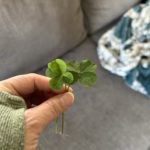





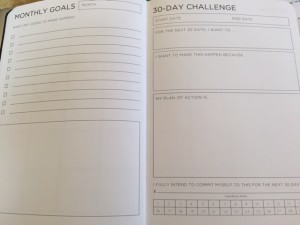
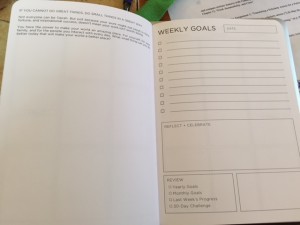
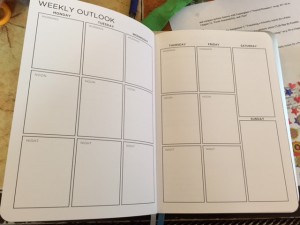
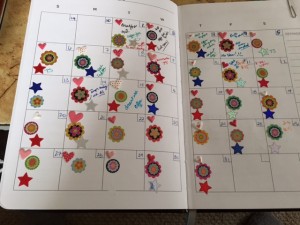



 D5 Creation
D5 Creation